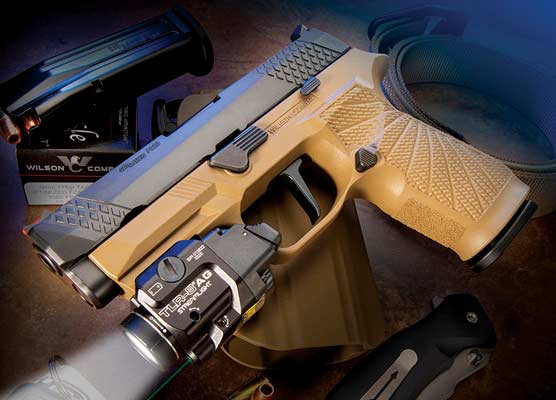The .44 Russian
Can It Be Fired In A .44 Special?
Smith & Wesson introduced the first successful big-bore, centerfire sixgun, the Model #3 American, in 1869. This revolver was chambered in a .44 centerfire, however to accommodate those who had Winchesters and wanted a companion revolver, S&W also chambered the American in .44 Rimfire, used in the Henry and Winchester 1866 Yellowboy leverguns.
These cartridges had one thing in common, they all used bullets with two diameters. The shank of the bullet fitting inside the brass case was smaller in diameter than the portion of the bullet in front of the case. One large group purchaser of S&W Americans made two important changes after their additional order. They changed the grip frame of the American, adding a small hump at the top of the backstrap, preventing the pistol from sliding in the hand under recoil. However, their most important contribution was to come up with the first cartridge using a bullet of uniform diameter. The group was the Russian military and the new cartridge was the .44 Russian.
Now bullets were not only of uniform diameter, the lube grooves were also seated inside the case, and the cylinder now had two diameters in the chambers. The larger one accepted the case, the smaller one at the front of the chamber accepted the bullet. The modern cartridge had arrived. The .44 Russian was not only important for what it was but also for what it became. In late 1907 the .44 Russian sired its son, the .44 Special, and was around in late 1955 to see its grandson, the .44 Magnum arrive.
The Mechanics
Reloading the .44 Russian is made easier today with the availability of .44 Magnum Carbide sizing dies. However, it may be necessary to shorten a .44 Magnum/.44 Special expanding die as well as a seater/crimper die to be able to reach the relatively short .44 Russian case. I use an old .44 Special expanding die and purchased a .44 Russian seating die. When combining these two with a .44 Magnum Carbide sizing die I’m not only reliving a major part of sixgun history I’m also able to turn out first-class .44 Russian handloads.
For loading I use Oregon Trail’s 225- and 240-gr. RN bullets over 3.8 grs. of Trail Boss for right around 685 fps. I drop-down to 3.5 grs. of Trail Boss for around 650 fps. With Lyman’s RN bullets 4.2 grs. of Universal is right at 720 fps, while 5.0 grs. of Unique yields 790 fps — all from a 71/2″ Colt Single Action. The most accurate bullet I’ve found in this .44 Russian is the RCBS #44-200CM over 5.0 grs. of Universal for just under 760 fps and 1″ groups.
The .44 Russian still provides much pleasurable shooting.
Other Models
S&W chambered the Model #3 Russian and the New Model #3, both single action top-breaks, in .44 Russian. Their Double Action top-breaks were mostly chambered in .44 Russian too. Colt chambered the Single Action Army in .44 Russian and after the .44 Special arrived they chambered for it too, marking the barrel: “Russian and S&W Special .44.” Colt also chambered a very few of their Model 1878 Double Action sixguns in .44 Russian and S&W, even though the Triple-Lock debuted in .44 Special, apparently had to take care of some diehards and thus a few Triple-Locks are also found chambered in .44 Russian.
All of the original S&W .44 Russian chambered top-breaks, whether they be single or double action, should only be used with black powder. However, Uberti offers an excellent replica of the Model #3 Russian chambered in .44 Russian which is safe with reasonable smokeless loads. I have a pair of Uberti .44 Russians and back them up with a Colt Single Action.
Is it absolutely necessary to have a .44 Russian chambered cylinder or will the .44 Special work just fine with Russian brass? I once loaded a bunch of balloon head .44 Russian brass with the standard original load of 23.0 grains of black powder under a 250-gr. round-nosed lead bullet. Using a 71/2″ Colt Bisley Model chambered in .44 Special, 50 of these were fired at 25 yards. The result was I had one ragged hole made by 50 bullets. There’s your answer.







